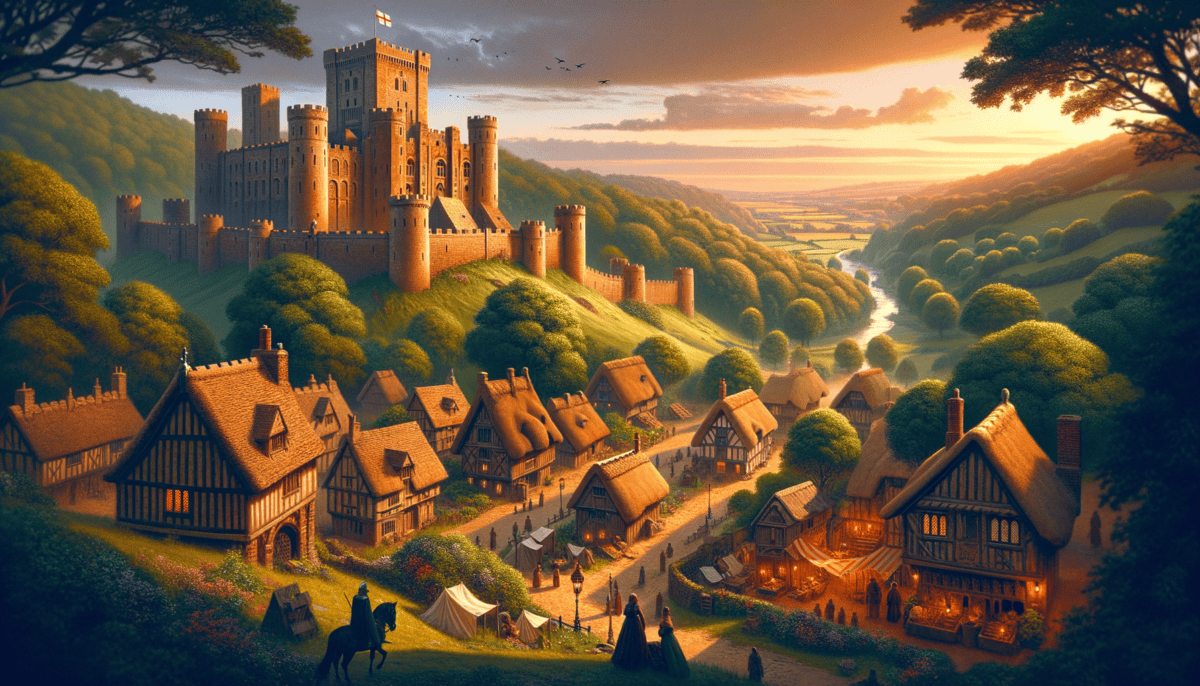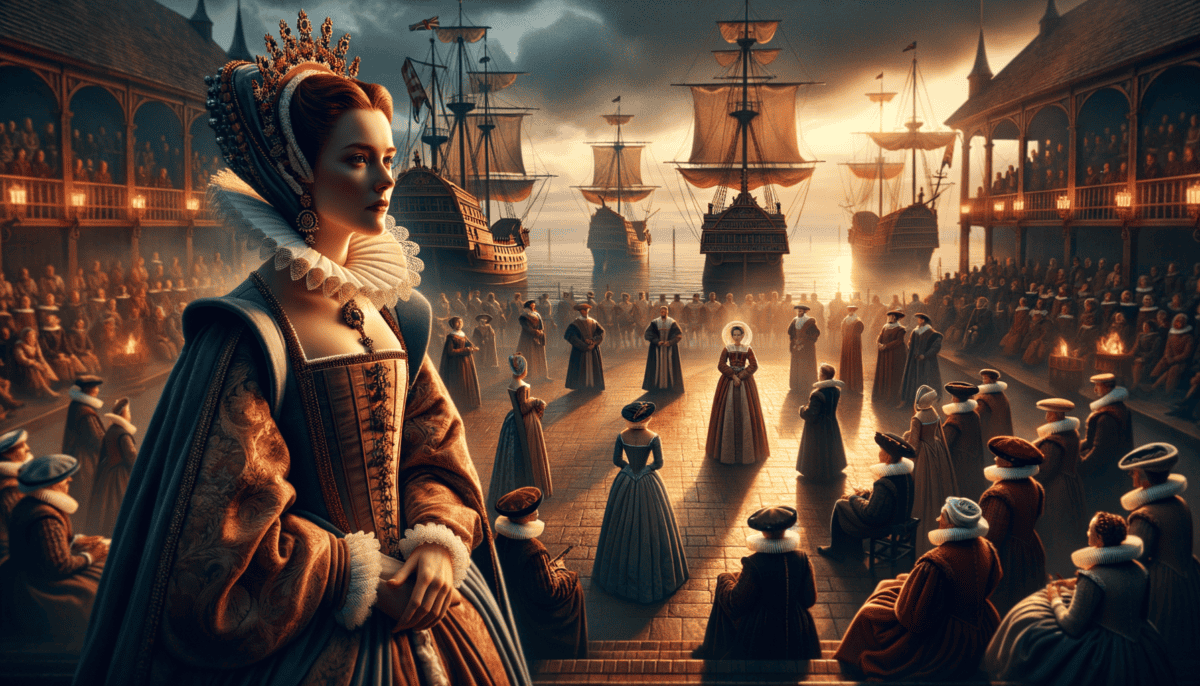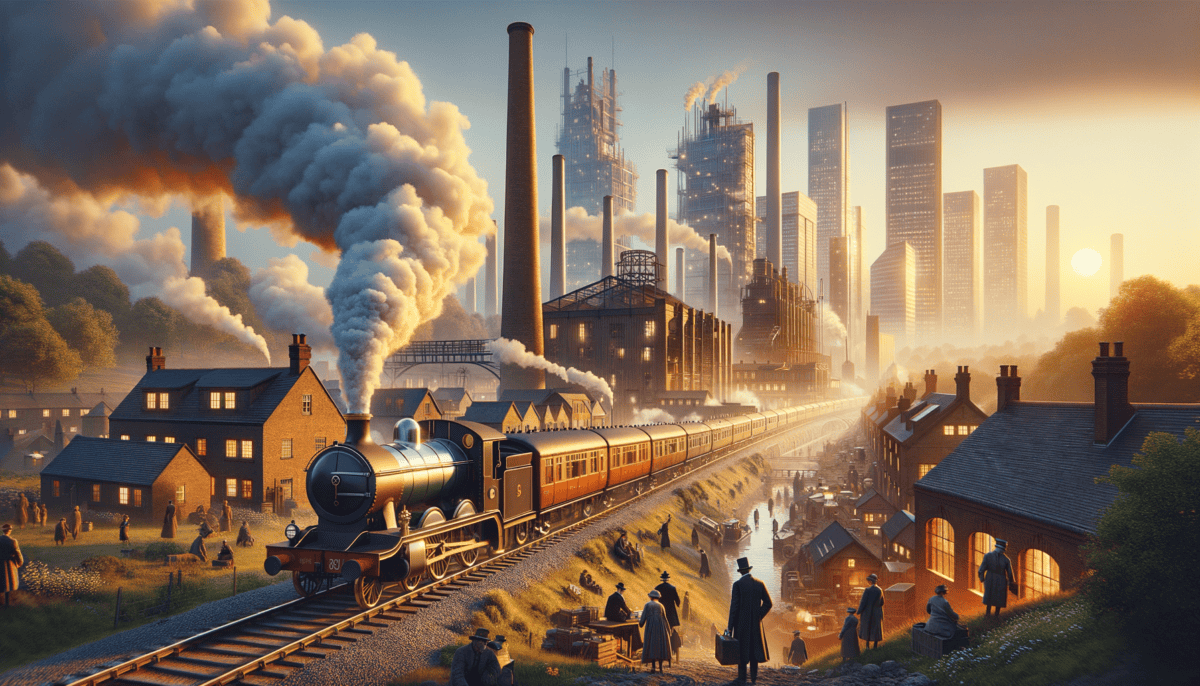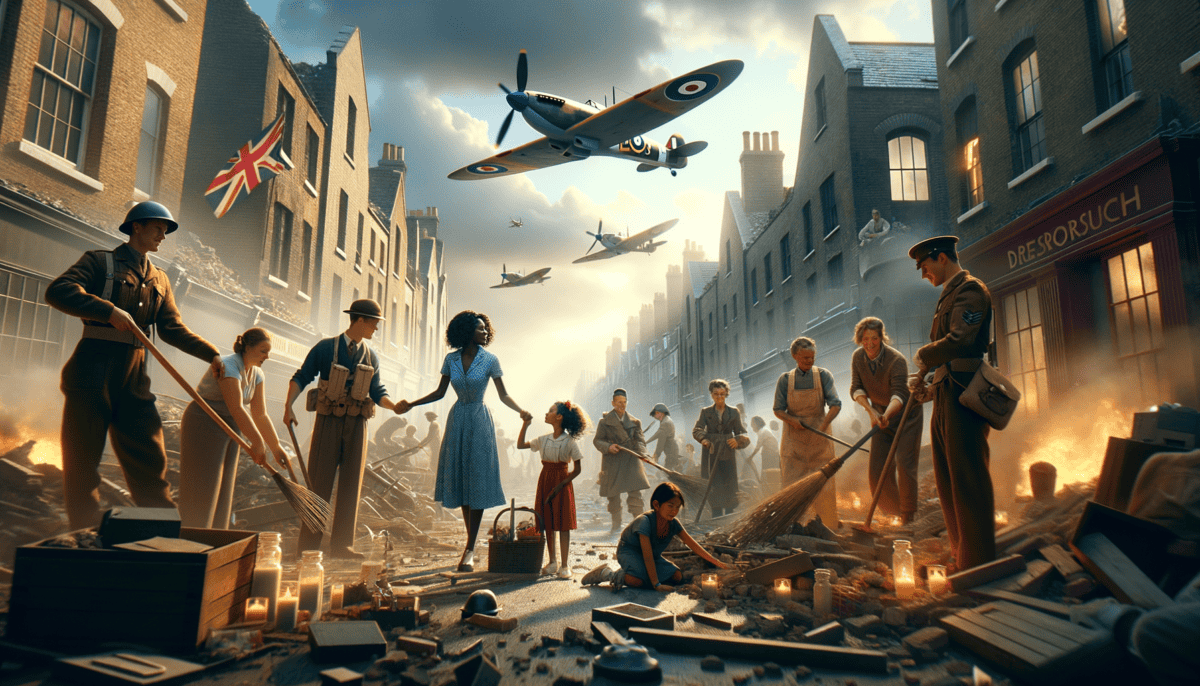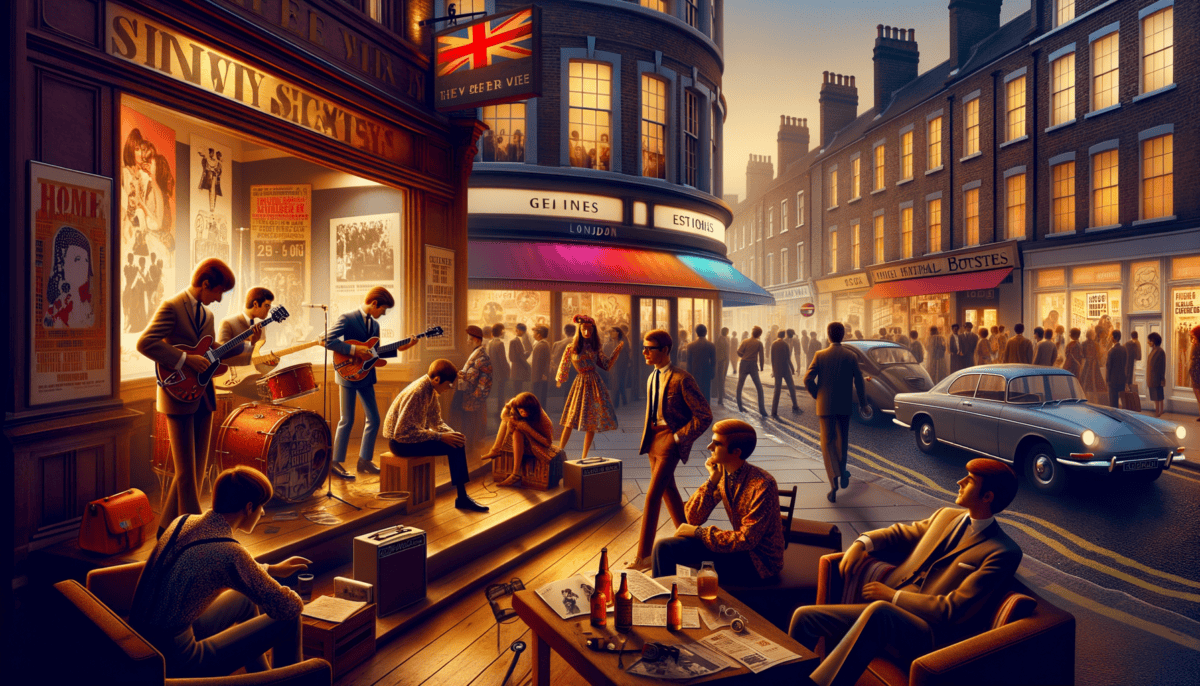Ancient Mysteries and Roman Adventures
Little Sarah stood at the edge of Salisbury Plain, her eyes wide with wonder. Before her, massive gray stones reached toward the sky like giant fingers. This was Stonehenge, one of the oldest and most mysterious places in England.
"Wow! How did they build this?" Sarah asked her grandfather, who smiled knowingly.
"That's a great question! These stones are very, very old – over 5,000 years old! The people who lived here then were very clever," Grandpa explained, touching one of the rough stones.
The ancient people who built Stonehenge didn't have trucks or cranes. Instead, they worked together using wooden logs to roll the heavy stones. Some of these stones came from far away in Wales!
“Can you imagine moving stones as heavy as ten elephants without any machines?” Grandpa asked with a twinkle in his eye.
Sarah shook her head, amazed. Around Stonehenge, people lived in small villages. They were called the Celts, and they were very good at:
• Making beautiful jewelry
• Growing food
• Creating pottery
• Building round houses
• Working with metal
But everything changed when new visitors arrived from far away. They came in big boats across the sea, wearing red cloaks and shiny armor. These were the Romans!
"The Romans brought many new things to England," Grandpa said, pulling out an old coin from his pocket. "They built the first cities with stone roads and big buildings."
Sarah looked at the coin carefully. "Did everyone like the Romans coming here?"
Grandpa chuckled. "Not at first! There was a brave Celtic queen named Boudica who fought against them. She had bright red hair and rode a chariot into battle!"
The Romans stayed in England for about 400 years. They built beautiful houses with heated floors and pretty mosaics. They also created the first proper towns, like London (which they called Londinium).
"What happened to all the Romans?" Sarah asked, looking around at the ancient stones.
"They had to go home to protect their own country," Grandpa explained. "But they left behind many wonderful things that changed England forever – like roads, cities, and even some of the words we use today!"
As the sun began to set behind the massive stones of Stonehenge, Sarah imagined all the people who had stood in this same spot over thousands of years – the ancient builders, the Celtic tribes, and the Roman soldiers in their shiny armor.
"Time for home," Grandpa said gently. "But remember, Sarah, the story of England was just beginning. There were many more adventures to come!"
Sarah took one last look at the mighty stones. She couldn't wait to learn what happened next in England's amazing story.
The evening light cast long shadows across the ancient stones, marking the end of one chapter in England's history, but many more exciting tales were waiting to be told.
Knights and Castles: A Time of Change
Sarah and Grandpa stood on a hill overlooking a massive stone castle. The morning sun made its gray walls shine like silver.
“After the Romans left, new people came to England,” Grandpa explained. “They were called the Anglo-Saxons and Vikings.”
Sarah’s eyes grew wide. “Were the Vikings the ones with the big boats?”
“Yes! They sailed in long ships with dragon heads on the front. They were fierce warriors who came from lands far to the north.”
The Anglo-Saxons built small kingdoms across England. They had kings with names like Alfred the Great, who loved books and helped protect his people. But everything changed when William the Conqueror came from France in 1066.
“Look at how life was different back then,” Grandpa said, pointing to the castle. “Everyone had a special job:”
• Kings and queens ruled from their castles
• Knights protected people and fought in battles
• Farmers grew food for everyone
• Craftspeople made things like bread and tools
• Priests taught people in churches
Sarah watched as actors in medieval costumes walked around the castle grounds. “What’s that paper they’re holding?” she asked, pointing to a man dressed as a king.
“That’s the Magna Carta,” Grandpa smiled. “It was a very special paper that said even kings had to follow rules. It was like a promise to be fair to everyone.”
“Tell me about the knights!” Sarah bounced excitedly.
Grandpa picked up a toy sword from a nearby gift shop. “Knights lived by a special code. They promised to:
Be brave
Protect people who needed help
Tell the truth
Be kind to others
“Did they really fight dragons?” Sarah asked hopefully.
Grandpa laughed. “No, but they did have exciting tournaments called jousts. Knights would ride horses and try to knock each other off with long poles called lances. It was like a big sports game!”
As they walked through the castle, Sarah saw how people lived back then. There were huge fireplaces for cooking, thick walls to keep everyone safe, and narrow windows where archers could shoot arrows.
“Listen,” Grandpa said softly, “can you hear the echoes of the past? The sound of horses’ hooves on stone, knights training in the courtyard, and ladies dancing at grand feasts?”
Sarah closed her eyes and imagined it all. She could almost see the colorful flags flying from the towers and smell the bread baking in the castle kitchen.
“Life wasn’t easy back then,” Grandpa explained, “but people worked together to build something amazing. These castles and the brave knights who lived in them helped make England strong.”
As the sun began to set, casting long shadows across the castle walls, Sarah thought about all she had learned. The castle stood proud and tall, just as it had for hundreds of years, keeping its stories safe inside its ancient walls.
Walking back to the car, Sarah clutched her toy sword. “Grandpa, what happened after the time of knights and castles?”
Grandpa’s eyes twinkled. “Ah, that’s when England’s story gets even more exciting. Kings and queens would change everything about how people lived and thought.”
Kings, Queens, and New Beginnings
The sun peeked through the stained glass windows of Hampton Court Palace, casting colorful patterns on Sarah and Grandpa.
“Today we’ll learn about a very special time in England’s story,” Grandpa said, pointing to a huge painting of a man with broad shoulders and a stern face.
Sarah squinted at the painting. “He looks grumpy!”
Grandpa chuckled. “That’s King Henry VIII. He changed everything about England when he was king.”
“Henry wanted England to be different from other countries. He made big changes to the churches and how people prayed. This time was called the Reformation.”
Sarah watched as actors in Tudor costumes walked through the palace halls. Ladies wore beautiful dresses with tight waists and big skirts. Men had puffy sleeves and fancy hats.
Grandpa led Sarah to the great kitchen. “Look at this! The Tudor kings and queens had special foods like:
Roasted peacock
Sweet treats made with sugar
Spices from far away lands
Fresh fruit pies
“After Henry VIII, his daughter Elizabeth became queen,” Grandpa explained. “People called her time the Golden Age because so many wonderful things happened.”
“Like what?” Sarah asked, twirling in front of a mirror like a Tudor lady.
“Well, a man named William Shakespeare wrote amazing plays that we still watch today. Brave sailors went on long trips to find new lands. And England became very strong when they beat the Spanish Armada – a huge group of enemy ships!”
“Queen Elizabeth never married,” Grandpa continued. “People called her the Virgin Queen. She was very clever and ruled England for 45 years!”
“Did she live in this palace?” Sarah asked, looking at the beautiful gardens through the window.
“She had many palaces and would travel between them. Each one was like a small town, with hundreds of people working to make life comfortable for the queen.”
They walked into a room with a long table set for a Tudor feast. Sarah imagined the sounds of music playing, people laughing, and plates clinking.
“The best part about the Tudor times,” Grandpa said with a smile, “was that people started to think differently. They asked questions about the world and wanted to learn new things.”
Sarah spotted a globe in the corner. “Is that when people started sailing around the world?”
“Exactly! Brave explorers like Francis Drake sailed all around the Earth. They brought back new things like potatoes, tobacco, and stories about far-away places.”
As they walked through the palace gardens, Sarah imagined Queen Elizabeth walking these same paths, making big decisions that would change England forever.
“Did you know,” Grandpa said, “that Queen Elizabeth had red hair and white makeup on her face? She started many fashions that other people copied.”
Sarah touched her own red hair and smiled. “Just like me!”
The afternoon sun made the palace windows sparkle like jewels. “Grandpa,” Sarah asked, “what happened after Queen Elizabeth?”
Grandpa’s eyes lit up. “That’s when England started to change in ways nobody could have imagined. Big machines and new ideas would make the world very different indeed.”
Steam, Steel, and Dreams
Sarah and Grandpa stood at the entrance of an old factory building. The red bricks were dark with age, and tall chimneys reached toward the sky.
“This looks different from the palace,” Sarah said, wrinkling her nose.
“That’s because we’re entering a whole new chapter of England’s story – the Industrial Revolution!” Grandpa’s eyes sparkled with excitement.
Inside the museum, a huge steam engine filled the room. Its brass parts gleamed, and Sarah could almost hear its mighty “chug-chug” sound.
“This machine changed everything,” Grandpa explained. “It helped make clothes, move trains, and build big ships. People called it the ‘Iron Horse.'”
Sarah watched as the museum guide made a small model steam engine work:
Steam pushed pistons
⚙️ Wheels turned round and round
Trains could go faster than horses
♀️ People could travel far away
“But Grandpa,” Sarah frowned, “wasn’t it noisy and dirty?”
“Yes, it was! Cities grew very big and very smoky. But exciting things were happening too. Let me show you.”
“People built huge bridges made of iron. They made tracks for trains to cross the whole country. Ships sailed to far-away places and brought back tea, spices, and cotton.”
They walked past displays showing how people lived. Children worked in factories and mines. Families lived in small houses close together.
“That sounds hard,” Sarah said softly.
“It was,” Grandpa nodded. “But brave people worked to make things better. They made new laws to protect children and help poor people.”
In the next room, bright lights showed off shiny inventions. “Look at all these things people made!” Sarah exclaimed.
“Yes! English inventors were very busy. They made:
- Bicycles with rubber tires
- Better ways to light streets
- Telephones to talk far away
- Faster and safer trains
A map on the wall showed red lines spreading across the world. “What’s that?” Sarah asked.
“That shows how big England’s influence grew. We traded with countries all over the world. The British Empire became so large that people said ‘the sun never sets on it’ – because it was always daytime somewhere in the Empire!”
Sarah spotted some old photographs. Ladies wore long dresses with tiny waists. Men had tall hats and big mustaches. Children played with wooden toys and metal trains.
“Did you know,” Grandpa said, “that this was when people started taking holidays at the seaside? Trains made it easy to visit beaches.”
Sarah’s eyes widened. “Just like we do now!”
As they walked toward the exit, thunder rumbled outside. Dark clouds gathered, reminding Sarah of those old factory chimneys.
Grandpa looked thoughtful. “The world was changing fast. Some changes were good, some were hard. But bigger changes were coming – changes that would shake the whole world…”
Courage Through Fire
Thunder crackled as Sarah and Grandpa hurried through the rain to their next destination – the War Memorial Museum. The gray sky matched the somber stone building before them. ️
“Two big wars changed England forever,” Grandpa said softly. “The first started in 1914, and the second in 1939.”
Inside, Sarah gasped at the sight of an old Spitfire airplane hanging from the ceiling. Its silver wings gleamed under the lights. ✈️
“That’s what my dad flew in the Battle of Britain,” Grandpa said proudly. “He was one of the brave pilots who protected our skies.”
Sarah walked closer to a display showing life during wartime:
“People grew food in their gardens called ‘Victory Gardens.’ Children wore gas masks to school. Families slept in underground shelters during air raids. Everyone saved scraps of metal to make planes and ships.”
“What’s that?” Sarah pointed to a poster of a stern-looking man with a round face.
“That’s Winston Churchill, our wartime leader. Listen to his famous words:”
“We shall fight on the beaches,
We shall fight in the fields,
We shall never surrender!”
They stopped at a recreation of a 1940s kitchen. Everything was different from Sarah’s home:
- Ration books for food
- Powdered eggs and dried milk
- No cars – everyone rode bikes
- Families gathered around the radio for news
“Look at this!” Sarah exclaimed, pointing to a display about the ‘Dig for Victory’ campaign.
“Yes,” Grandpa smiled. “Parks and gardens became vegetable patches. Even the lawn outside Buckingham Palace was used to grow food!”
They moved to a section about children during wartime. Sarah saw photos of kids wearing name tags, carrying gas masks in cardboard boxes.
“Were you scared, Grandpa?” Sarah asked quietly.
“Sometimes,” he admitted. “But we all helped each other. Neighbors shared food. Kids collected scrap metal. Everyone pitched in.”
A wall of photographs showed celebration scenes from 1945. People danced in the streets, waved flags, and hugged each other.
“That’s V-E Day – Victory in Europe,” Grandpa explained. “The war was over, but England had changed.”
“What happened to the British Empire?” Sarah asked, remembering the big red map from earlier.
“Many countries became independent, but stayed friends with Britain in something called the Commonwealth. It was time for a new kind of relationship with the world.”
As they left the museum, the rain had stopped. A rainbow arched across the sky.
Sarah noticed Grandpa wiping his eyes. She squeezed his hand.
“Those were hard times,” he said, “but they showed how strong people can be when they work together. And after all that darkness, something new and exciting was coming – young people were about to change everything…”
Rock ‘n’ Roll Revolution
The rain clouds had cleared as Sarah and Grandpa walked down Carnaby Street in London. Colorful shop windows displayed bright clothes, and music spilled onto the street.
“This is where the fun really started,” Grandpa grinned. “The 1960s changed everything – the music, the clothes, even how people thought!”
“Listen!” Grandpa stopped outside a music shop playing an old record. “That’s The Beatles – four lads from Liverpool who changed music forever.”
Sarah watched old TV clips showing screaming fans and four boys with funny haircuts:
“Everyone went crazy for The Beatles! Girls cried when they saw them. Their songs played all over the world. Soon, English music, fashion, and art became super popular everywhere!”
They entered a clothing shop full of bright mini-dresses and fancy suits. Sarah’s eyes widened at all the colors.
- Mini-skirts became popular
- People wore bright, colorful clothes
- Rock bands played new kinds of music
- ✌️ Young people wanted peace and love
“Your grandma wore dresses just like these,” Grandpa chuckled. “She had long boots and did her hair big and fancy!”
At a café, they watched more old films showing people dancing, protesting, and celebrating:
“Young people spoke up for what they believed in.
They wanted peace, not war.
They wanted everyone to be treated fairly.
They made art and music about their dreams.”
“Was it scary when everything changed so fast?” Sarah asked.
“Some older people didn’t like it,” Grandpa admitted. “But change can be good. Look at England now – we have friends from all over the world, lots of different foods to eat, and music from everywhere!”
As the sun set, they sat on a bench in a park. Sarah thought about everything she’d learned about England’s story:
“We started with stone circles and became Romans. We built castles and sailed ships. We had kings and queens, fought in wars, and made amazing music. What’s next, Grandpa?”
Grandpa smiled and hugged her tight. “That’s the best part, love – the story isn’t over. You and your friends will write the next chapter. Maybe you’ll make movies, or cure diseases, or fly to Mars!”
Sarah looked up at the stars twinkling above London’s lights. She thought about all the people who had lived here before – the stone builders, the Romans, the knights, the sailors, the soldiers, and the musicians. Each one had added something special to England’s story.
“Ready to go home?” Grandpa asked.
“Yes,” Sarah nodded. “But can we do this again? I want to learn more!”
Grandpa laughed. “That’s the wonderful thing about history, Sarah – there’s always more to discover. And the best stories are the ones we share together.”
As they walked home hand in hand, Sarah knew she was part of something bigger – a story that stretched back thousands of years and forward into tomorrow. And she couldn’t wait to see what happened next. ✨


